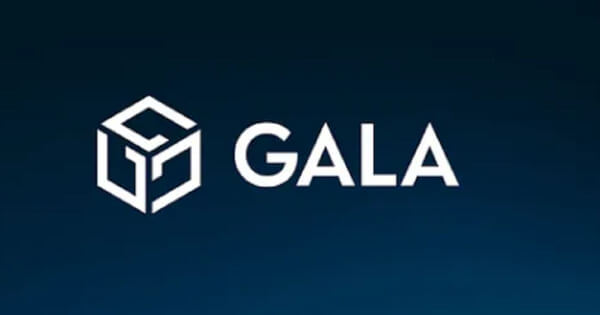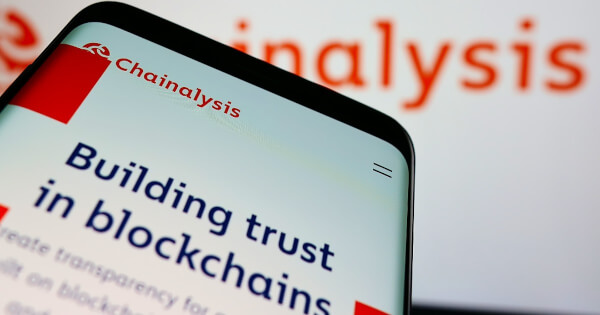TL;DR
Bitcoin halving = 50% reduction in issuance, reduction of the sell pressure, plus increase in demand to front run the opportunity of owning something that will become scarcer. The Merge = will be orders of magnitude bigger due to 90% reduction in issuance and an even bigger reduction in sell pressure, a demand increase of millions of ETH during the first months to chase PoS yields, investors frontrunning the opportunity of ETH becoming a lot scarcer, useful and with a bullish narrative. All of this will be combined with no withdrawals during the first months and high volatility which will supercharge IP 1559, burning hundreds of thousands of ETH while 0 can be sold from issuance. The Merge eliminates almost all the sell pressure ETH had under PoW and creates a very high demand for ETH in the long term, by transforming it into a yield generating asset.
------------------------------------ Full text --------------------------------------
Scrolling through different crypto resources, the Merge is often compared to three Bitcoin halving (usually referred to as the triple halving) it's not a bad comparison but the triple halving is only a small part of the changes the Merge will introduce. There's also a lot of confusion and misunderstanding around withdrawing the ETH gained by validators, leading many to believe it will be a sell the news event and the bull run will end right after the Merge hits mainnet.
To understand why the Merge can't be simply compared to three Bitcoin halving we need to analyze what a Bitcoin halving is, and the market dynamics caused by it. To put it simply a Bitcoin halving is an event hardcoded into the Bitcoin protocol, it reduces in half the issuance of new Bitcoin every 210,000 blocks. There's no other change, it's the same event and effect every time a halving takes place. What changes after a Bitcoin halving?
- On the supply side it reduces the amount of new Bitcoin mined by 50%, making it scarcer and reducing the sell pressure caused by miners (estimated in multiple billions per year as of 2021).
- On the demand side fundamentally nothing changes because only the issuance is modified, there's no increase of demand coming from changes to the protocol. Bitcoin doesn't become more useful after a halving, it's not more scalable nor energy efficient. However the demand does increase because a Bitcoir halving will make investors take the opportunity of buying something they know will become scarcer and with less sell pressure. New supply goes down due to the cut in issuance, there's a big decrease in the sell pressure, and demand goes up as buyers know it will become scarcer. As long as the demand doesn't go down due to macro events, the price increases a lot in the following months after a halving has taken place. The differences between a Bitcoin halving and the Merge. The Merge is not hardcoded into the protocol, it's an update which has been worked on for years and changes much more than the issuance, which is why comparing the Merge to three Bitcoin halving is the wrong framework to analyze it. The Merge changes the issuance, it changes the structure of the ETH market by switching from miners to validators, it enables future upgrades to the protocol such as data shards, it becomes an asset which generates a yield and much more, the Merge introduces many changes to the supply and demand of ETH.
- On the supply side it reduces the amount of ETH created, not by 50% but by 90% (the real number will depend on how many validators are live, but it should be around a 90% decrease once the merge hits mainnet). 90% is the equivalent of three Bitcoin halving which is where the "meme" of the triple halving comes from. At recent prices the reduction in supply equals to around 10 billion dollars in sell pressure per year which will disappear once Po is live. Some may think 10 billion is not that much compared to the market cap of ETH but that's wrong, 10 billion doesn't make the market cap go down by 10b, it makes it go down by a multiple of it. The same would apply if someone were to buy 10b worth of ETH in a year, the marketcap of ETH wouldn't increase with 10b but by much more. It's very hard to quantify this effect and it's even harder to quantify it when coupled with multiple more changes to the supply and the demand as we will see in this post.
- There's more on the supply side, not only will new supply be reduced by 90%, the market structure will completely change. ETH issuance won't go to miners anymore, under PoS it will go to stakers, reducing the sell pressure of the new ETH issued as validators don't have as many costs as miners. A miner is what we call a forced seller, the mining business has thin margins due to expensive hardware and high energy costs which forces the miners to sell a big portion of their ETH to cover the costs. A big miner needs to pay the hardware to mine, electricity, a facility to host its miners, employees, security to monitor everything and protect the hardware, taxes and in many cases interest on money borrowed to expand the mining facilities. It's very hard to quantify how much of the ETH mined is a must sell for miners, as some miners have cheaper electricity than others, some are more aggressive when it comes to expanding their mining operations and replacing old hardware, some countries have high taxes while others don't and many other reasons you could consider. It's important to note that as the mining business gets more and more competitive, the margins get thinner and thinner, and the forced selling increases. As for stakers there's also forced selling but it's much smaller compared to miners, a staker only needs to pay for taxes, hardware cost (in the case of solo stakers, which can be a good desktop or cheap server) or a percentage of the ETH gained (in the case of staking through a third party which would be sold by to cover their costs and realize profit). It's very hard to estimate what percentage a staker needs to sell, due to the difference in taxes between countries, ranging for the most part between 0-30%. It also depends on how many users solo stake compared to the number of users deciding to use a third party, each of them charging a different percentage of the ETH gained. It's also worty, noting that validators are more likely to be long term holders, as they need to stake ETH which is a highly volatile asset for a relatively low % gain in the same asset, it's unlikely to find many stakers that are not long term holders of ETH (staking aligns the incentives as ETH is needed to validate and gain rewards, while GPs were used before which were external to the protocol). A rough estimation of the effect of switching from miners to validators is a reduction of more than 50% in forced selling. At recent prices the change from miners to validators equals to more than 400 million dollars reduced sell pressure per year, and we must add MEV (miner extractable value), plus tips (priority fee to get included into a block) which will also go to stakers, making the number of total reduced sell pressure per year 700 million dollars (these numbers can vary a lot as MEV, tips and the price of ETH are highly volatile). In the short term it's not one of the biggest changes but it's one of the most important for the long term, ETH couldn't keep growing in price at a high pace with such a high selling pressure, the switch to PoS fixes this. Under PoW the Ethereum network was overpaying a lot for its security.
- The last change to the supply side only applies to the short term but it's very important to understand it, and one big reason the Merge has low chances of being a sell the news event. The Merge won't enable withdrawing the ETH gained by validators (tips and MEV go to a different address and can be withdrawn) until the first update after the merge, which will probably take around 4 months or even a bit longer. During a few months 0 ETH will be able to be sold from new issuance (MEV and tips come from ETH already in circulation)
- Now looking at the demand side, we have the same effect as with a BC halving but amplified, investors will want to front run the opportunity of buying an asset that will become scarcer, with less sell pressure and in the case of ETH more useful and with a bullish narrative we will see in the next points.
- There's going to be an increase in demand from the switch to validators, in PoW GPUs were used to mine but under PoS ETH is the new GPUs, to gain rewards by validating you need to stake ETH. It will create a long term demand for ETH as investors buy it to stake it and gain yield from it, it will add a constant buy pressure as investors accumulate ETH. ETH becomes a yield generating asset.
- In the short term, demand to buy and stake ETH will be amplified due to the switch to PoS. The beacon chain is live right now, but those validators don't get the tips, nor they get MEV as those still go to miners until the Merge hits mainnnet. After PoS is activated the APR of staking will instantly increase, from around 5% (right now this number is at 5.4% but as the Merge gets closer it will go down as more validators will come online) up to 10-20%. The rate should be close to 15-20% during the first months as the merge will bring a lot of volatility and volatility generates lots of fees. The rate is predicted to be quite high for up to a year after the merge, as there's an entry queue to stake which limits the number of validators that can go online per epoch, it may take more than 1 year with a full queue for the staking rate to go below 10%. The high yield will amplify the demand to buy ETH and further reduce the supply of liquid ETH (not all the ETH will be completely "locked" as protocols such as Lido allow for liquid staking).
- Another increase in demand will come from an increased confidence in the ETH community. As explained before, the Merge has been worked on for years (it's the biggest upgrade ever done to a blockchain) and many critics think the Merge will never hit mainnet or will never work. If the Merge is implemented without issues, it will bring a big boost of confidence and narrative in ETH. Narratives are very important in the crypto industry, and the Merge is only the first big phase of the roadmap for ETH, a successful merge will be seen as a very bullish future, making many investors want to buy before other massive updates, like data shards which will improve scalability by multiple orders of magnitude.
- The last source of increased demand will be other narratives such as the energy reduction by switching to PoS, a reduction of 99.99% in the amount of energy used compared to PoW. NFTs get a lot of bad press due to the amount of energy used by PoW. Similarly ETH is widely hated by the gaming community due to the shortage of GPUs caused by miners. The Merge won't be a sell the news event.
- Withdrawals won't be available until the first update after the merge, there will be multiple months where O ETH from issuance will be able to be sold, temporarily eliminating most of the daily sell pressure.
- Funds will want to chase the high yields during the first months of PoS, millions of ETH will be bought and/or accumulated and sent to the staking contract.
-Biggest reduction in issuance there's ever been
combined with the biggest reduction in sell pressure, and the biggest increase in demand, it will create an unseen supply shock.
Sorry to disappoint but I'm not qualified to give an accurate price prediction, however everyone should get ready for the biggest bullrun ETH has ever seen and a high chance of a flippening happening the first months after the Merge.
[link] [comments]

You can get bonuses upto $100 FREE BONUS when you:
💰 Install these recommended apps:
💲 SocialGood - 100% Crypto Back on Everyday Shopping
💲 xPortal - The DeFi For The Next Billion
💲 CryptoTab Browser - Lightweight, fast, and ready to mine!
💰 Register on these recommended exchanges:
🟡 Binance🟡 Bitfinex🟡 Bitmart🟡 Bittrex🟡 Bitget
🟡 CoinEx🟡 Crypto.com🟡 Gate.io🟡 Huobi🟡 Kucoin.

















Comments